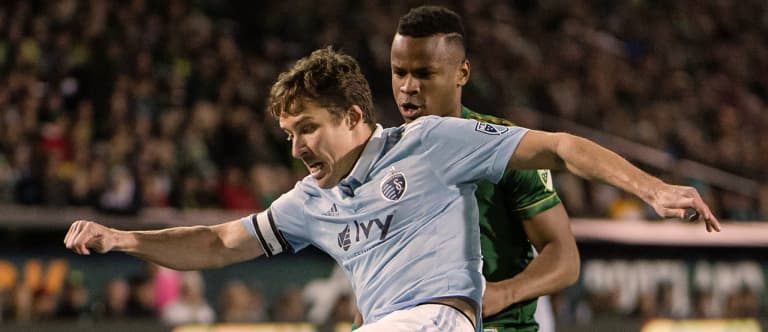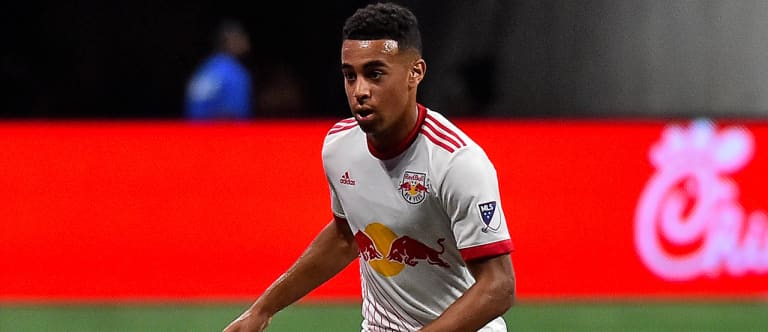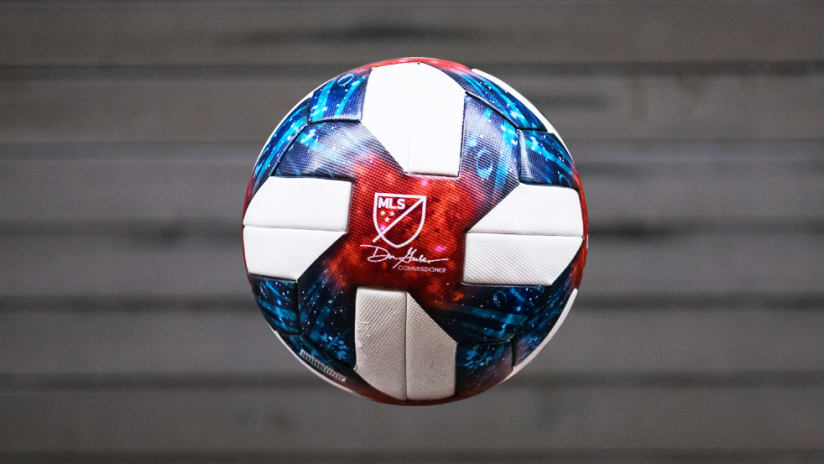Let’s talk about the big stuff. You know, the theoretical questions that don’t really mean anything but also mean everything. You don’t have to have an answer to them — who really knows the meaning of life? — but you at least need to have a grasp of their complexity.
As the New Year approaches, every club has decisions to make. Some big, some small. As they make those decisions, they need an understanding of the big picture. Pondering the big questions brings the smaller topics into context.
Here are three big theoretical questions every club should be pondering. They don’t necessarily need an answer, but they better be aware of them...
Is it possible to win MLS Cup without spending the big bucks?
It’s the most basic question in Major League Soccer right now: Has the age of parity ended?
Look at four of the last five MLS Cup winners: Atlanta, Toronto, Seattle, and the Galaxy. What do they all have in common? They spend more than almost everyone else.
It’s hard to know exactly how much a team spends in MLS (transfer fees, wages, bonuses, academy setup and agent fees), and who the actual big spenders are. But it seems clear that Atlanta, Toronto, Seattle, and the Galaxy are near the top. They all have had huge stars who could only be acquired through large transfer fees and/or huge wages.
The talent gap between teams appears to be bigger than ever. Can a team that doesn't spend on elite players still compete for an MLS Cup?
My gut tells me yes. (If you gut tells you no, then skip ahead to Question 3.) Spending big transfer fees to get huge stars helps, but good coaching and smart player acquisitions still go a long way. And, more so, the playoff system provides a wonderful equalizer. Anything can happen in a single game. Taking us to Question No. 2...
Are the playoffs inherently different than the regular season? Subsequently, is it necessary to plan differently for each?

Sporting KC and the Portland Timbers have been a study in contrasts when it comes to consistency in the regular season and playoffs. | USA Today Sports Images
After reading Question No. 1, there should have been an immediate thought that came to your mind: What about the New York Red Bulls?
The Red Bulls won the Supporters’ Shield in 2015 and 2018; they don’t spend as much on the first team as Atlanta or Toronto. FC Dallas, another team that doesn’t pay as much as others, won the Shield in 2016. It's clear that it's possible to do well in the regular season without doling out large transfer sums.
However, neither Red Bulls nor Dallas made an MLS Cup in those years. Similarly, Sporting KC have made the playoffs eight straight years but only reached MLS Cup once. Was that bad luck at the wrong time or an inevitable outcome of the process?
The regular season is a 34-game marathon spanning eight months, four time zones, and who knows how many climates and playing surfaces; the playoffs are now exclusively 90 minute (or occasionally 120 minute) win-or-go-home matchups. The regular season and the playoffs are inherently different tasks.
The types of players and playing styles necessary to succeed over 34 games might not be the same as the ones necessary to win a four-game tournament.
It’s not impossible to build for both; Toronto won the double in 2017 and Atlanta nearly matched it in 2018. But Toronto had three of the top 10 highest paid players in the league and Atlanta brought a $15-million player off the bench. To this point in league history, those are special cases.
So is it one or the other for most clubs? Is it a fool’s errand to attempt to be a great regular season team and also have MLS Cup aspirations?
Subsequently, should teams focus on one more than the other? Is that even possible?
Over half of the teams in the league make the playoffs. It’s not a crazy idea to build a team that hopes for 7th in the regular season but maximizes its chance of winning playoff games. It would look a lot like Houston in 2017: top-heavy on talent, attackers who can make something out of nothing, and a solid spine of the team.
Okay, it’s a high-risk approach. But at least it’s a plan.
Is it possible to build a Homegrown contender?

Tyler Adams | USA Today Images
Speaking of plans ... we often use the Red Bulls as the model of how non-Atlanta/Toronto organizations should function in MLS. As teams try to navigate the new era of MLS, in which some clubs spend eight figures on transfer fees, the Red Bulls seem like a good North Star. If you A) develop a clear playing style, B) use your USL club to groom players for the first team and C) trust younger players to do the job, you can give yourself a chance to win trophies. But are we sure the Red Bulls’ model works?
Think about it like this ... if you were to replace Tyler Adams with another Sean Davis (an above-average Homegrown Player), would the Red Bulls have been a trophy contender?
I know that every team would be weaker if you take away their best player. But Adams wasn’t just RBNY’s best player, he was their proof of concept. The Red Bulls have built a philosophy that requires bringing players through the academy. They’re betting that player development can be as effective as spending. And last year it worked. But it brings up a key question: Can or should a team expect to produce a Tyler Adams?
I fully believe MLS teams should be developing better players, but I’m not sure we should expect them to develop a Tyler Adams ever year. Adams is exceptional; he’s an anomaly. As such, how does that impact a team’s plan?
Whenever we talk about paradigms in sports, I always think about the Oakland A's implementation of "Moneyball." At the same time that A’s general manager Billy Beane started his Moneyball approach, the A’s also has three elite young pitchers coming through the ranks. Yes, Beane made a huge bet on the Moneyball approach to signing players, but he also had three stars get to the big leagues at the same time. The concept of Moneyball became famous because it worked. But did it work because Moneyball was the right approach, or because the A’s had three elite pitchers at the same time? In other words, if the pitchers hadn’t also been there, would the team still have won? (There is more that goes into interpreting the Moneyball effect than that, but you get the concept of intervening variables. Perhaps everything looks better when you have a once-in-a-generation talent in the lineup.)
We can ask the same question of the Red Bulls, the league’s model for Homegrown development. Where would the team finish if they hadn’t had Tyler Adams in 2018? Fourth in the East? Would be talk about a fourth-place team as an example for others? If you were an executive, would you bet your career on modeling after a fourth-place team?
That brings us back to Question No. 1. Is there a reliable way to compete for MLS Cup without signing Miguel Almiron or Sebastian Giovinco? If you can’t sign those players right now, should your sole goal be in the near future to accumulate resources? Instead of building your team to win in 2019, maybe it should be develop young players who you can transfer for a profit. Sell Homegrowns, reinvest the funds in other players to sell for more, and eventually you get yourself to the point when you can buy Almirons. By 2023, you’re sustainably sitting next to Atlanta, Toronto, Seattle, and the Galaxy.
I don't have any set conclusions to these questions. That’s the point of metaphorical conversations. I don’t expect anyone to have right answers. But I would expect club executives to be throwing these questions around their water coolers.














